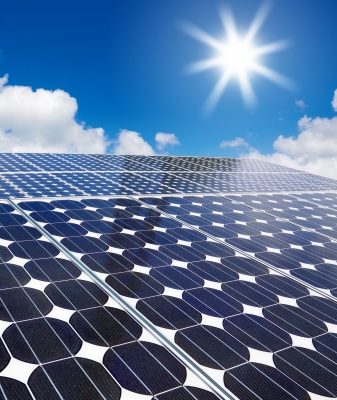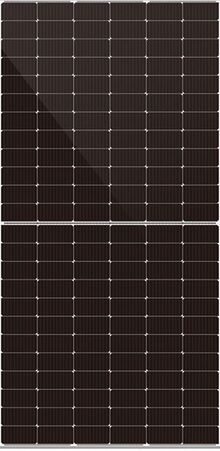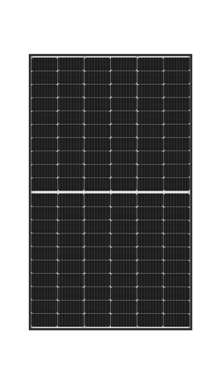Monocrystalline
Monocrystalline silicon solar cells
Solar cells made from monocrystalline silicon (m-Si), also called single crystalline silicon, are easily recognized by homogeneous coloring and form, which is a sign of high purity, as shown in the picture below:

he cells of monocrystalline PV panels are made of silicon ingots with a cylindrical shape. To optimize performance and reduce the cost of a monocrystalline cell, the four sides of the blocks are pruned and this gives the characteristic look of monocrystalline photovoltaic panels.
A good way to distinguish mono-polycrystalline panels is that the latter have perfect rectangular cells without diamonds between them.
Advantages:
- They have the highest efficiency because they are made of the highest quality silicon. The efficiency of monocrystalline solar panels is usually 15-20%.
- Compact. As they provide the highest power, they require less space for 1kW installed power. They produce up to 4 times more electricity than thin-film solar panels.
- Monocrystalline solar panels have the longest life. Most manufacturers put a 25-year guarantee on their panels.
- They tend to perform better than similar polycrystalline modules in less sunlight.
- Monocrystalline solar panels are more efficient at high temperatures. Decreasing efficiency when the temperature rises is no different than polycrystalline, but the limit is higher - usually 85C, unlike. The polycrystalline is 65C.
Disadvantages:
- Because they are of the highest quality, they are also the most expensive. From a financial point of view, polycrystalline (and sometimes thin-film) panels may be better choices for some people.
- If the solar panel is partially covered with shade, dirt or snow, the entire chain may fall apart. Consult with specialists how to proceed if you think that panel closures may be a problem.
- For the production of the panels, a process called "Czochralski" is used, which involves cutting out parts of silicon to produce the effect. This is related to material loss.
- More frequent support. Monocrystalline solar panels should be cleaned by dirt, because they directly affect their performance and this is felt.





